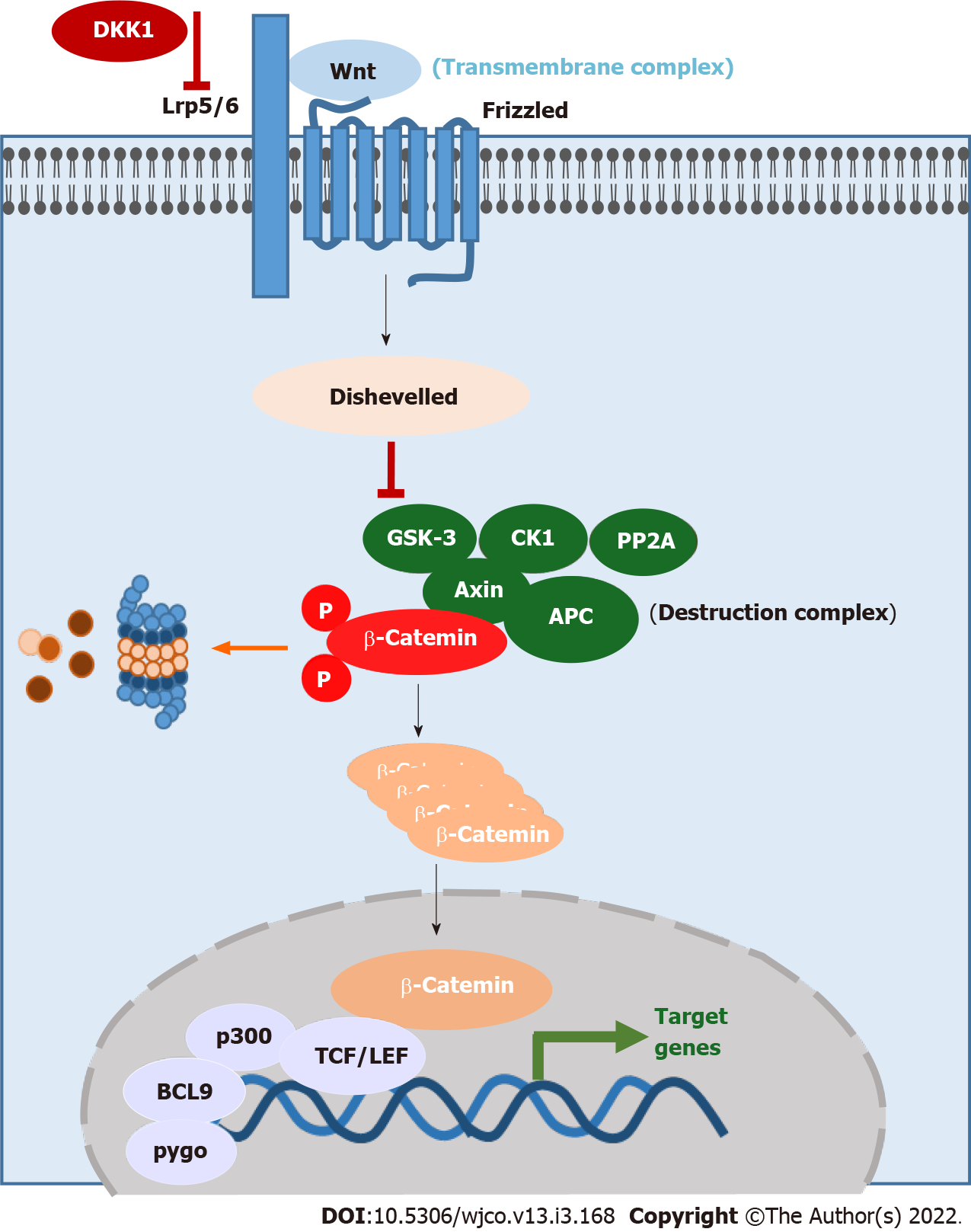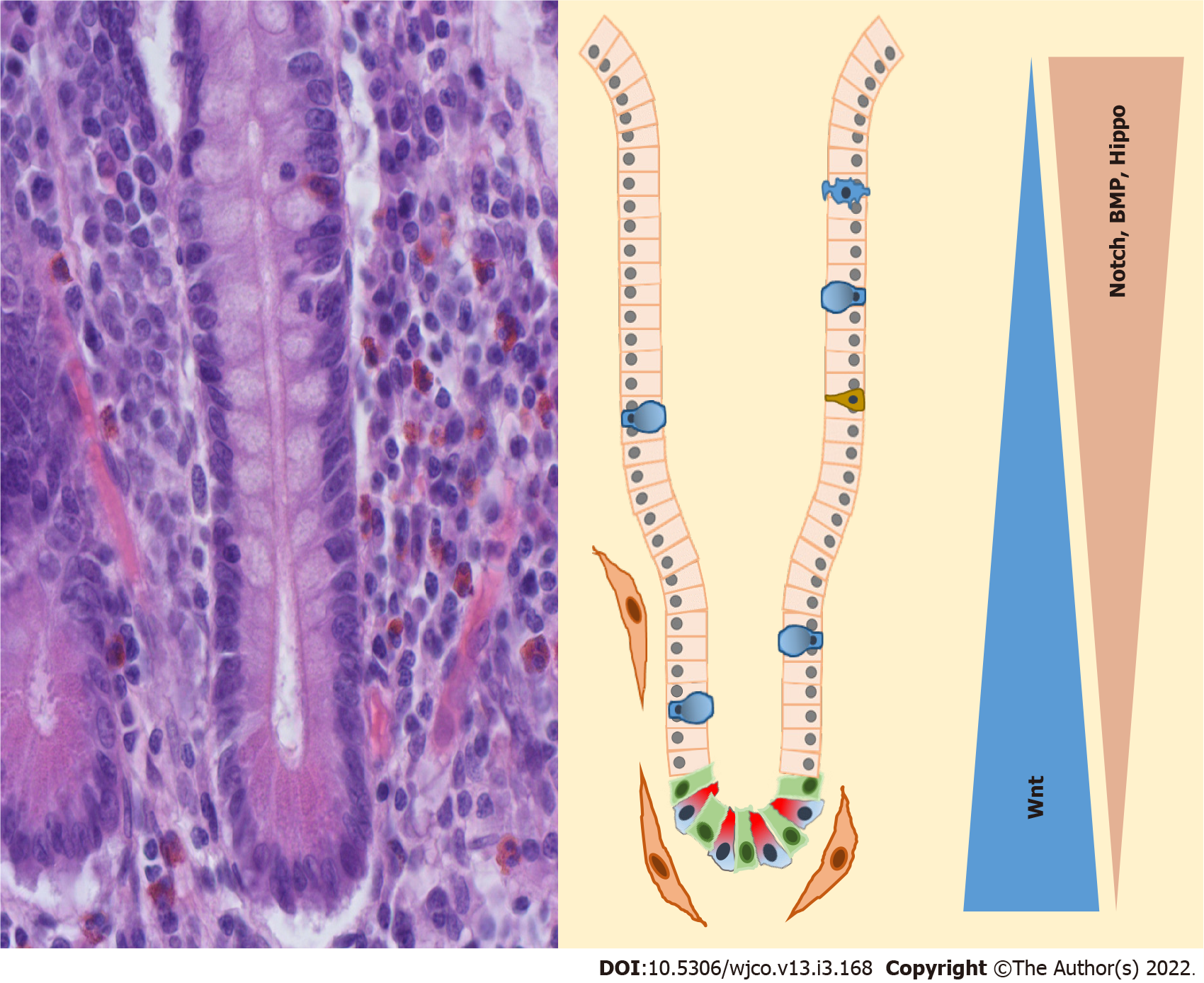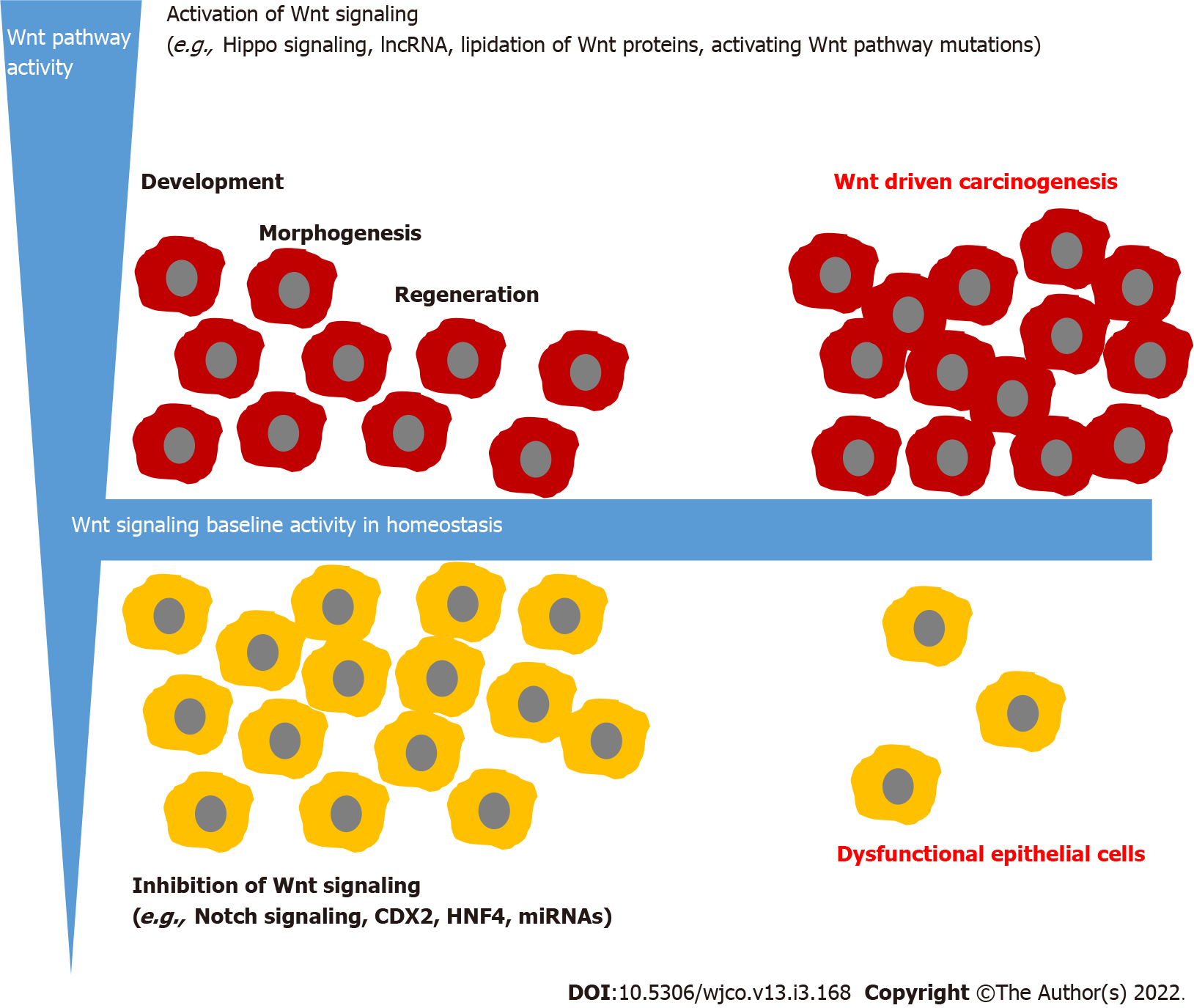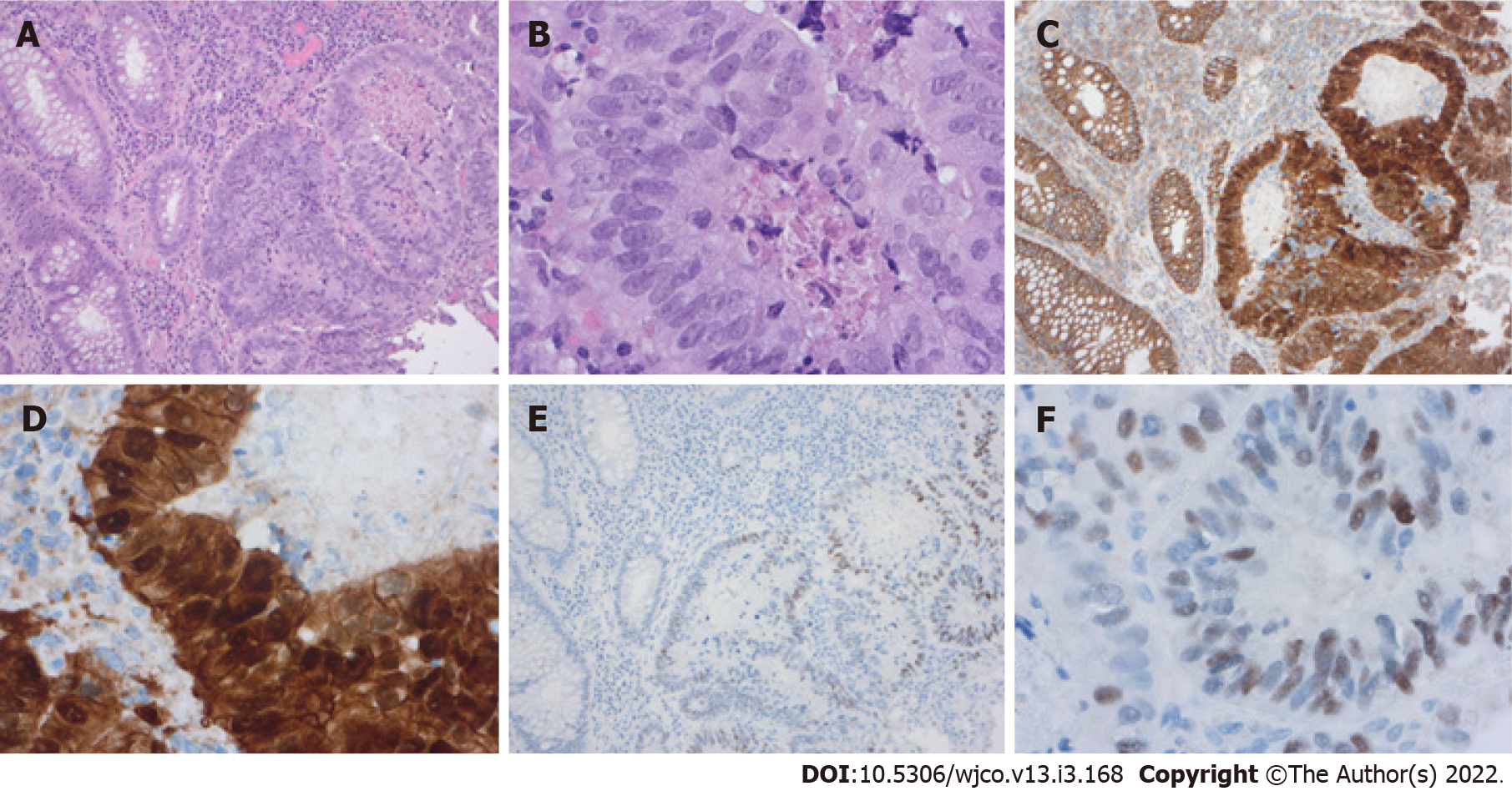Copyright
©The Author(s) 2022.
World J Clin Oncol. Mar 24, 2022; 13(3): 168-185
Published online Mar 24, 2022. doi: 10.5306/wjco.v13.i3.168
Published online Mar 24, 2022. doi: 10.5306/wjco.v13.i3.168
Figure 1 Wnt signaling pathway.
Activated Wnt signaling pathway: Wnt ligand binds to the transmembrane complex and activates Disheveled, which turns down the destruction complex. β-catenin accumulates in the cytoplasm and translocates in the nucleus, where it acts with several cofactors as a transcription factor. Inactivated Wnt signaling pathway: β-catenin is phosphorylated by the destruction complex and gets degraded. Dkk1: Dickkopf 1; GSK-3: Glycogen synthase kinase-3; APC: Adenomatous polyposis coli; PP2A: Protein phosphatase 2A; TCF/LEF: T-cell factor/lymphoid enhancer-binding factor; BCL9: B-cell lymphoma 9.
Figure 2 Small intestinal crypt of Lieberkühn with signaling pathway gradients.
On the left sight histology of a small intestinal crypt (400 × Hematoxylin eosin) and on the right a schematic drawing of a small intestinal crypt with intestinal stem cells (green), Paneth cells (red), goblet cells (light blue), tuft cell (blue) and neuroendocrine cell (yellow). BMP: Bone morphogenetic protein.
Figure 3 Wnt signaling regulatory mechanisms in intestinal cell development.
Wnt signaling balances intestinal development, morphogenesis and regeneration due to a gradient of Wnt pathway activity in epithelial layers with major activated cells (red) and minor activated cells (yellow). In Wnt-driven carcinogenesis, the gradient of Wnt pathway activity is lost and major activated, neoplastic cells (red) dominate. lncRNA: Long non-coding RNA; miRNAs: MicroRNAs.
Figure 4 Colorectal carcinoma.
A: Invasive growth and loss of polarity [100 × Hematoxylin eosin (HE)]; B: Cellular atypies (400 × HE); C: β-catenin staining (100 ×) membranous in normal epithelial, nuclear staining in dysplastic cells; D: β-catenin staining (400 ×) with partly extensive accumulation of β-catenin in the nucleus; E: Positive staining of c-myc (a target of β-catenin) in the dysplastic cells (100 ×); F: Positive nuclear staining of c-myc (400 ×).
- Citation: Swoboda J, Mittelsdorf P, Chen Y, Weiskirchen R, Stallhofer J, Schüle S, Gassler N. Intestinal Wnt in the transition from physiology to oncology. World J Clin Oncol 2022; 13(3): 168-185
- URL: https://www.wjgnet.com/2218-4333/full/v13/i3/168.htm
- DOI: https://dx.doi.org/10.5306/wjco.v13.i3.168












